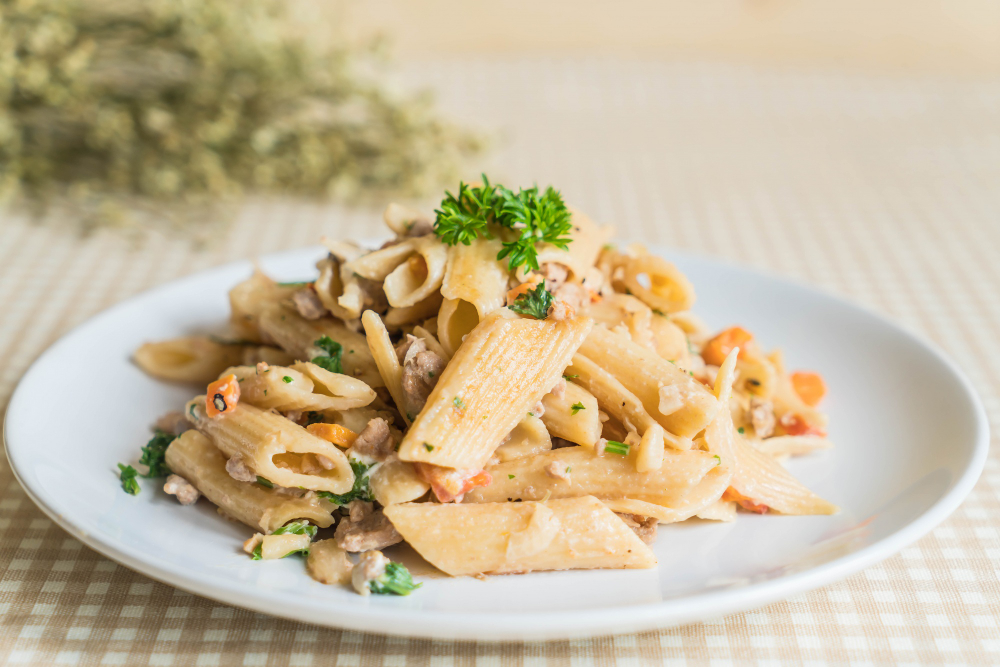Similar to a young child playing with Play-Doh, there are countless methods to prepare sea urchin pasta, and most of them are tasty and salty.
Sea urchin is referred to in Japanese as uni (pronounced [oo-nee]). Sea urchin is the key ingredient in the creamy spaghetti dish known as “Uni.” Although they come in a wide range of sizes and aesthetics, when we talk about eating sea urchins, we typically mean the deep-purple, long-spined variety from Hokkaido, Japan, or Santa Barbara, California. Or, conversely, to the Northeast’s more prevalent short-spined, coral-green Atlantic sea urchin from Maine.
You may find sea urchin roe packaged in tiny wooden trays in any Japanese fish market. In these marketplaces, I’ve rarely seen sea urchin roe that was past its prime, but occasionally you might come across a tray of roe that is a little muddy or has lost some of its textural definition. Do not buy them!
Although sea urchin is expensive, you don’t need much of it. I’ve discovered that four to eight urchin tongues are sufficient to give the meal a particular saline, iodine sweetness.
The next concern is figuring out the best way to include the sea urchin in the dish once you have it.
Preparing the Sauce
The usual method for making creamy sea urchin pasta is to sauté garlic, shallots, and chilies in olive oil, add the pasta, and then drizzle with a sauce prepared from raw sea urchin roe combined with softened butter or heavy cream. The sauce is then heated through and thickened, acquiring a rich, glossy sheen, after being simmered for just the right amount of time.
Both of these fundamental procedures yield respectable, straightforward outcomes, but I thought the final meals lacked brightness. I solved this issue by adding wine to the garlic and oil base. This is an idea I borrowed from a Sicilian cookbook.
The butter I was combining with the sea urchin caught my attention next. Bright flavours are usually dulled by butter, and cream wasn’t much better. What if I choose a dairy product with some natural brightness, I wondered. I tried out crème fraîche, sour cream, Greek yogurt, buttermilk, and Mexican-style crema. I discovered that Mexican-style crema worked best. Mexican crema has a more pronounced flavour and a thinner consistency than American sour cream.
Putting the dish together
The process of finishing the dish is the same as that of finishing any other basic pasta and sauce dish: Cook the pasta until it is just shy of al dente (so that it has the tiniest bit of a chalky core in the middle), and then quickly stir in the sauce and a little pasta cooking water.
My preferred method for preparing dried pasta is to use less water than is normally advised. Very little. This technique not only cooks pasta more quickly, but also results in pasta with the ideal texture and water that is extremely starchy and great for emulsifying sauces.
To finish the dish, I prepare the pasta in a 12-inch skillet with salted water, stirring it occasionally. I start to work preparing the sauce’s foundation by sautéing the shallots, garlic, and chili. Using tongs, I remove the cooked pasta from the skillet and place it right into the pan containing the olive oil and aromatics.
Finally, I add my puréed sea urchin sauce, turn the heat to high, add a generous amount of pasta water, and simmer until the sauce is creamy, noodle-coating, and light. If the sauce over-reduces, I add a little more pasta water as I cook (it always does).
I then add a few tongues of raw uni, some minced chives and chive flowers, and we’re ready to serve.

Ingredients
- 4 to 8 fresh sea urchin (uni)
- ⅓ cup (80g) Mexican-style crema, or crème fraîche
- 300g dried long pasta
- Kosher salt
- 1 tablespoon extra-virgin olive oil, plus more for drizzling
- 2 cloves garlic, finely minced
- 1 small-sized shallot, finely minced
- 1 teaspoon Calabrian hot chili spread
- ½ cup (125ml) dry sake or dry white wine
- Freshly ground black pepper
- A handful finely minced fresh chives, and chive blossoms for serving
Directions
- Set aside 4 sea urchin tongues for garnish. Using a blender or food processor, combine the remaining sea urchin and crema. Blend everything thoroughly. Set aside.
- Put pasta in a 12-inch skillet or a saucepan and cover with water. Season with salt. Stirring occasionally, place on a high heat source and bring to a boil. Cook pasta until it’s barely al dente but still has a tiny bit of a chalky centre.
- While that is happening, warm the olive oil in a big skillet over medium heat until it shimmers. Add the garlic and shallot and stir continuously for 2 minutes, or until the aromatics are softened but not browned (reduce heat if this happens). Stir in the Calabrian chili spread until well combined. Add the sake or wine and cook for approximately a minute. While waiting for the pasta to finish cooking, remove the pan from heat.
- Use tongs to remove the cooked pasta from the boiling water and place it right into the pan containing the garlic and oil mixture. Add some of the starchy water used to cook pasta to the uni purée in the pan. Set the pan over high heat and cook for one minute, turning and swirling often, or until the pasta is thoroughly cooked and the sauce comes together and takes on a creamy consistency. If the sauce thickens too much, add additional pasta water to thin it down. Add salt and black pepper to taste.
- Serve the pasta in warmed serving dishes, top with more extra virgin olive oil, a whole sea urchin tongue, minced chives, and a garnish of sea urchin tongues.

